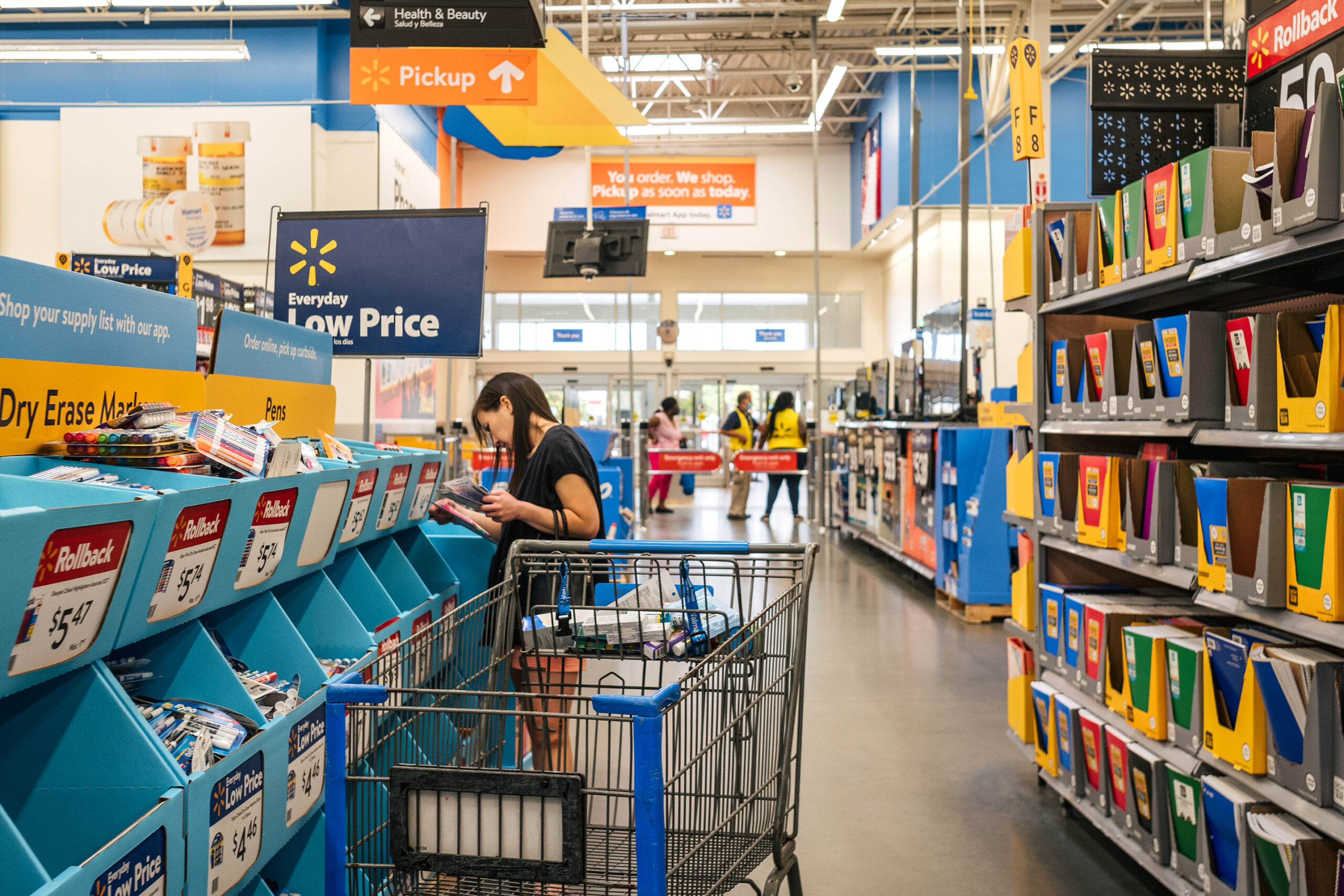Investors are eager to see if Walmart’s higher pricing is making customers nervous when the company publishes its quarterly profits on Thursday.
Inflationary pressures are closely monitored by the retail behemoth.
According to a retail analyst at Jeffries, “They’re going to identify any form of wavering in behavior,” Steph Wissink said. “In the context of ‘How healthy is the consumer?’ the voice of Walmart bears more weight.”

The quick rise in inflation raises concerns about what this indicates for Americans’ purchasing patterns following a pandemic and stimulus-fueled shopping binge.
According to the Bureau of Labor Statistics, the CPI climbed 7.5% in January from a year earlier, the quickest rate in 40 years. Food prices have risen by 7% in the last year, and this is being closely monitored because food is the most often purchased item by households.
Price hikes have been passed on to customers by major consumer goods corporations, including PepsiCo, Coca-Cola, and Procter & Gamble, which claim brand loyalty has kept sales robust.
Consumers will have to pay more for their favorite snacks and beverages, such as Gatorade, according to Pepsi executives during an earnings call last week. Walmart carries a large number of those items.
In spite of the supply chain snarls, consumers spend freely during the holiday season, according to Wissink, who noted that the backdrop is shifting. For the three months ending Jan. 31, Walmart will be reporting its results, which include the holiday season, in its report. Investors, on the other hand, are keen to learn about recent market movements.
According to Wissink, when prices continue to rise and stimulus cheques cease to be sent by the government, customers may begin to rethink their purchasing decisions.
As a retailer, Walmart has a unique perspective on the thoughts of its customers: Nearly 90% of Americans reside within a 10-mile radius of one of its stores, spanning multiple states, regions, and socioeconomic strata.
Almost 60 percent of net sales in the U.S. come from food, which is a common purchase for households and one of the key categories affected by inflation.
Analysts are split on whether Walmart’s sales and profit margins would benefit or be harmed by rising inflation.
According to Wissink, Walmart will take a larger share of middle- and upper-class customers’ wallets because of the retailer’s reputation for value. Walmart customers with lower incomes may buy less.
She rates the stock as a buy and sets a price target of $184, which is nearly 37% higher than the firm’s current price. According to Refinitiv, this is above the average price target of $165.44 set by analysts.
However, according to the retail analyst, Scott Ciccarelli at Truist Securities, customers who are feeling the pinch at Walmart have few other options besides the German discounter Aldi or dollar retailers like Dollar General for lower costs. That means Walmart is going to have to fight harder to keep up with the competition, he said.
He has a neutral outlook on the firm and a price objective of $153.
CEO Doug McMillon has stated Walmart may take advantage of rising prices. McMillon told CNBC’s “Squawk Box” in mid-November that the company will undercut competitors and gain market share by absorbing some growing shipping, labor, and material expenses rather than passing them on in the form of price hikes.
There was an immediate reaction to those comments and similar ones from Target.
Retail giant Walmart has yet to release guidance for fiscal 2023. This year, analysts expect earnings per share will rise to $6.70 from last year’s anticipated $6.42, on revenue of $571.45 billion, with a total of $588.36 billion expected in total revenue.
When prices rise, customers tend to stick to a tried-and-true routine: Buying more at discount stores. Shopping for lower-priced things by using coupons and scouring the aisles of a store.
Choosing a grocer’s own private labels instead of more expensive brands. Purchasing lower quantities. A new shirt or an entire tub of ice cream are two examples of non-necessary purchases.
According to IRI’s president of strategic analytics, Krishnakumar Davey, consumers have noticed price increases and are adjusting in some ways. Almost 90 percent of the more than 900 people surveyed by the market research agency in early January indicated they were concerned or highly concerned about rising supermarket prices.
When asked about the impact of rising grocery prices, 67% of low- and middle-income customers and 46% of high-income consumers stated they were changing their purchasing habits. Moreover, a third of low- and middle-income shoppers say they’re cutting back on non-essential purchases in order to get better discounts.
According to Davey, inflation may also lead to a shift in epidemic trends. Due to a lack of other options, consumers in the United States began to spend their money on more expensive foods and beverages, such as higher-quality steaks and gourmet pasta sauces.
They made fewer trips to the market and bought more using larger baskets to lessen their exposure to Covid.
“cherry-picking” is expected to take place in the coming months, as cash-strapped consumers hunt around for the best deals on essentials like milk and eggs.
Over the past year, Walmart’s stock has lost ground. As of Tuesday’s close, the company’s stock was down 7% over the past year, compared to the S&P 500’s 14% rise and a retail sector ETF’s 2% gain, respectively.
On Tuesday, Walmart shares closed at $134.37, up less than 1%. The market worth of the corporation is $372.73 billion…
Chuck Grom, a retail analyst at Gordon Haskett, wants to hear more about Walmart’s efforts to find new methods to make money, in addition to the results of the holiday season and the impact of inflation.
Walmart Connect, its ad network; Walmart+, its subscription service; and GoLocal, its local delivery service, are all part of the company’s growth strategy.
According to Grom, the pandemic has obviously made other retailers more resilient. Target’s same-day offerings, such as curbside pickup and home delivery via Shipt, attracted more customers.
Warehouse clubs like Sam’s Club, Costco, and BJ’s Wholesale saw an increase in memberships and renewals among the American public. Interest in home repair and landscaping initiatives has increased thanks to Home Depot and Lowe’s.
The verdict is still out at Walmart, he said.
The question posed by investors is, ‘Has Walmart won Covid?'” If we look back two years, is Walmart a better business than it was then?’ You might be able to refute that, but I’m not sure.




